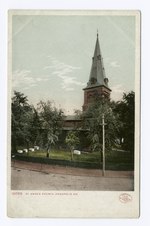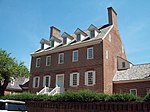George Washington's resignation as commander-in-chief

George Washington's resignation as commander-in-chief marked the end of Washington's military service in the American Revolutionary War and his return to civilian life at Mount Vernon. His voluntary action has been described as "one of the nation's great acts of statesmanship" and helped establish the precedent of civilian control of the military. After the Treaty of Paris ending the war had been signed on September 3, 1783, and after the last British troops left New York City on November 25, Washington resigned his commission as commander-in-chief of the Continental Army to the Congress of the Confederation, then meeting in the Maryland State House at Annapolis, Maryland, on December 23 of the same year. This followed his farewell to the Continental Army, November 2 at Rockingham near Princeton, New Jersey, and his farewell to his officers, December 4 at Fraunces Tavern in New York City.Washington's resignation was depicted by John Trumbull in 1824 with the life-size painting, General George Washington Resigning His Commission, now on view in the United States Capitol rotunda.
Excerpt from the Wikipedia article George Washington's resignation as commander-in-chief (License: CC BY-SA 3.0, Authors, Images).George Washington's resignation as commander-in-chief
State Circle, Annapolis
Geographical coordinates (GPS) Address Nearby Places Show on map
Geographical coordinates (GPS)
| Latitude | Longitude |
|---|---|
| N 38.978611111111 ° | E -76.491111111111 ° |
Address
Maryland State House (State Capitol)
State Circle 100
21401 Annapolis
Maryland, United States
Open on Google Maps









